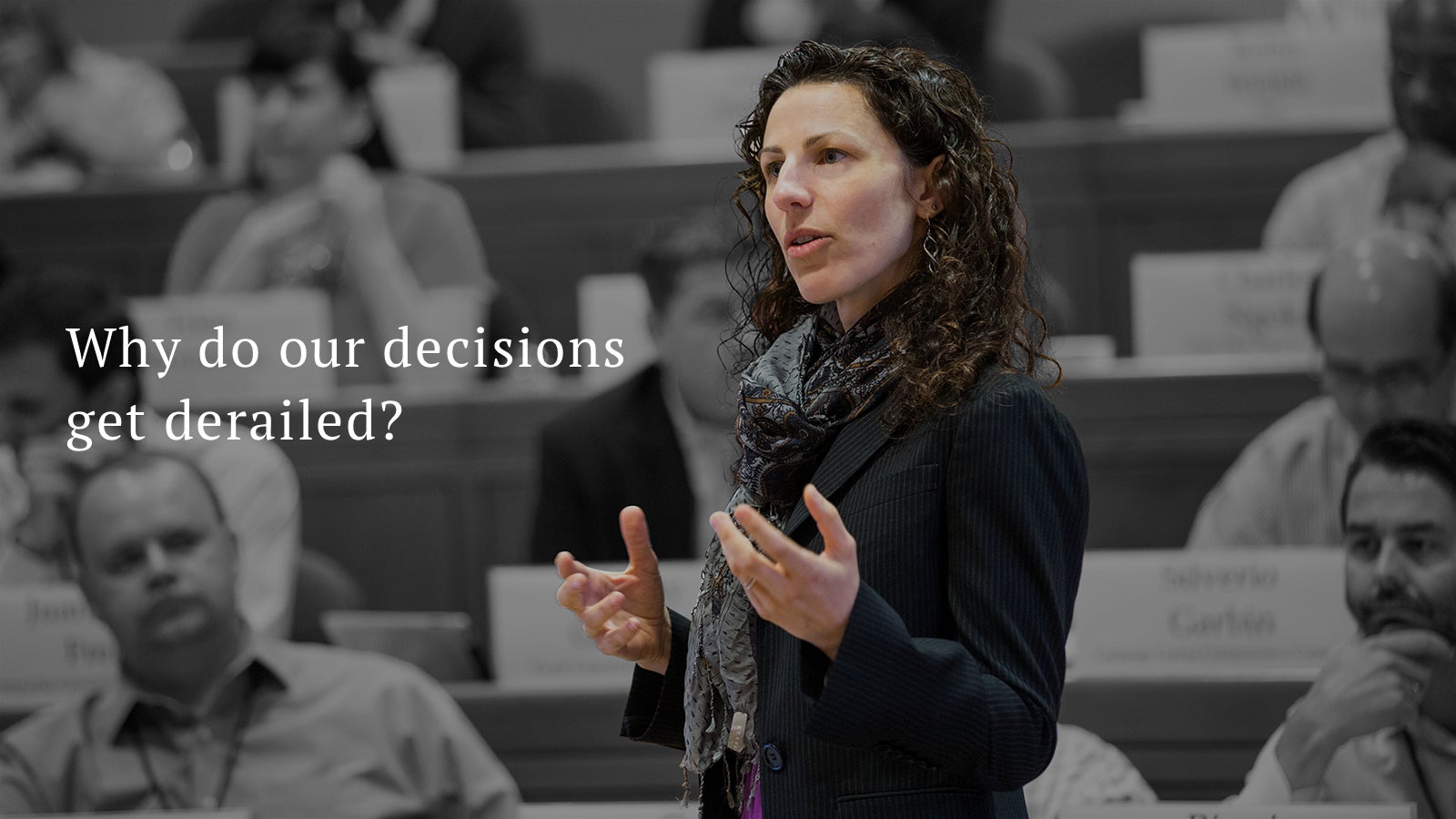Your decisions are affected by the environments in which they are made
It’s a no-brainer—we’d all become better decision-makers if we could. But rather than rewiring how we think, behavioral economics trains us to recognize shortfalls in the way we think when making decisions. Combining psychology, economics, and other analytical disciplines, the field aims to improve our decisions by offering evaluative tools and considering the physical decision-making environment.


It’s a no-brainer—we’d all become better decision-makers if we could. But rather than rewiring how we think, behavioral economics trains us to recognize shortfalls in the way we think when making decisions. Combining psychology, economics, and other analytical disciplines, the field aims to improve our decisions by offering evaluative tools and considering the physical decision-making environment.
What does this look like in practice? Try well-lit rooms that ban sunglasses or other enablers of anonymity—and potential dishonesty. They’re just a few of the decision-clouding factors uncovered by Francesca Gino, the Tandon Family Professor of Business Administration at Harvard Business School and faculty cochair of the HBS Executive Education program, Behavioral Economics: Understanding and Shaping Customer and Employee Behavior. Her 2013 book, Sidetracked: Why Our Decisions Get Derailed and How We Can Stick to the Plan, sheds light on the surprising and often straightforward ways that our choices go awry.
“Changes can be quite simple, but produce very powerful effects,” Gino says in an HBS video.
The professor’s laboratories are the executive suites, social settings, and other places where our analytical gears grind. She carefully orchestrates behavioral economics studies that put actual subjects into experimental conditions to test her hypotheses—from variably lit rooms to much more exotic locales.
Gino supercharged her research with a study of the Ducati motorcycle racing team, which saw unexpected success in its first year on a new circuit—and then enjoyed the ride too much. Subsequent bouts of overconfidence and over-celebration, as well as an ill-fated project to make its bike design even more dominant, set the team back years. It was a classic example of making decisions in the heat of the moment without proper scrutiny.
“The problem with the strategy of evaluating outcomes to understand whether the decision was a good or bad one is that we’re not paying attention to the process,” Gino explains in this video. “And the next time we are facing a similar decision, if the outcome is a good one but we have a very bad process, we are going to be in trouble.”
The Ducati case helps to highlight Gino’s three main reasons why decisions derail: “forces from within” like emotions and biases, interpersonal and social pressures, and influences from the external environment. Whether it’s motorcycles, jealousy-driven Oscar® snubs for Tom Hanks, or a counterproductive regulatory battle over bottled water taxes in Fiji, Gino sees the same framework at play—and asks for the same awareness and self-reflection in the face of complicated options.
“We usually ask, ‘What information supports what I want to do?’” Gino concludes. “Instead, we should ask, ‘Is there any information that suggests what I want to do is not the right course of action?’ And we don’t do that very naturally.”
With a steady hand and a studied mind joining them at the wheel, decision-makers everywhere don’t need to face the forked road alone.
This article was produced on behalf of Harvard Business School by the Quartz marketing team and not by the Quartz editorial staff.